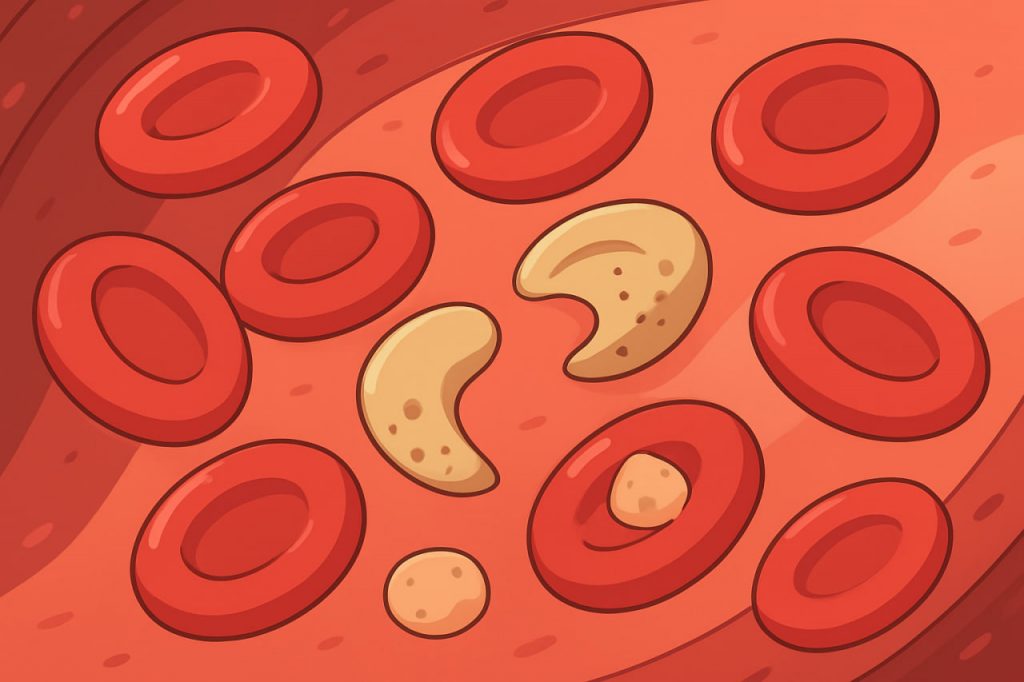Anemia is a common condition in which the body lacks enough healthy red blood cells or hemoglobin to carry sufficient oxygen to tissues. As a result, the body’s organs and muscles receive less oxygen, leading to fatigue, weakness, and other health issues. While anemia often develops gradually and may go unnoticed at first, its long-term effects can be serious if left untreated.
1. What Is Anemia?
Hemoglobin, a protein inside red blood cells, binds oxygen in the lungs and transports it throughout the body. When the number of red blood cells decreases or hemoglobin levels drop, tissues are deprived of oxygen — a state known as hypoxia. Anemia is not a single disease but a symptom of various underlying causes, from nutritional deficiencies to chronic illnesses or blood loss.
2. Main Causes of Anemia
Anemia can develop for several reasons:
- Iron deficiency — the most common cause worldwide, often due to poor diet, heavy menstrual bleeding, or internal bleeding.
- Vitamin B12 or folate deficiency — essential for red blood cell production; often linked to poor diet or absorption problems.
- Chronic diseases — such as kidney disease, cancer, or infections that interfere with red blood cell formation.
- Genetic disorders — like sickle cell anemia or thalassemia, which alter the shape or function of red blood cells.
- Acute or chronic blood loss — from injuries, surgery, or internal ulcers.
3. Common Symptoms
Anemia can cause a variety of symptoms depending on its severity and cause:
- Constant fatigue and weakness
- Pale skin or pale inner eyelids
- Shortness of breath and rapid heartbeat
- Dizziness, headaches, or cold hands and feet
- In severe cases: fainting, chest pain, or cognitive difficulties
Because symptoms often develop slowly, mild anemia may go unnoticed for months.
4. Diagnosis and Medical Attention
Anemia is diagnosed with a complete blood count (CBC), which measures red blood cells, hemoglobin, and hematocrit levels. Further tests can determine whether the cause is nutritional, genetic, or disease-related.
Self-diagnosis is not reliable — it’s important to seek medical evaluation to find and treat the root cause safely.
5. Treatment and Prevention
Treatment depends on the cause:
- Iron supplements or iron-rich foods for iron deficiency.
- Vitamin B12 or folic acid supplements for nutritional anemia.
- Treatment of underlying diseases (e.g., kidney disease, chronic inflammation).
- Blood transfusions or bone marrow therapy in severe or genetic cases.
To prevent anemia, maintain a balanced diet with iron, vitamin B12, and folate, found in foods like lean meats, eggs, beans, spinach, and citrus fruits.
Conclusion
Anemia affects millions worldwide but is highly treatable when detected early. Understanding its causes and symptoms helps prevent complications and improve quality of life. Good nutrition, regular check-ups, and timely medical care remain the best defenses against this silent but impactful condition.
Interesting Facts
Iron deficiency anemia affects over 1.6 billion people globally, making it the most widespread nutritional disorder. Interestingly, athletes are at a higher risk because intense physical activity increases red blood cell turnover. Even mild anemia can reduce concentration and memory function by up to 30%.
Glossary
- Hemoglobin — a protein in red blood cells that carries oxygen.
- Hypoxia — a condition of insufficient oxygen in body tissues.
- Iron deficiency — lack of iron required for red blood cell production.
- Thalassemia — an inherited disorder affecting hemoglobin formation.
- Folate — a B vitamin essential for producing red blood cells.


